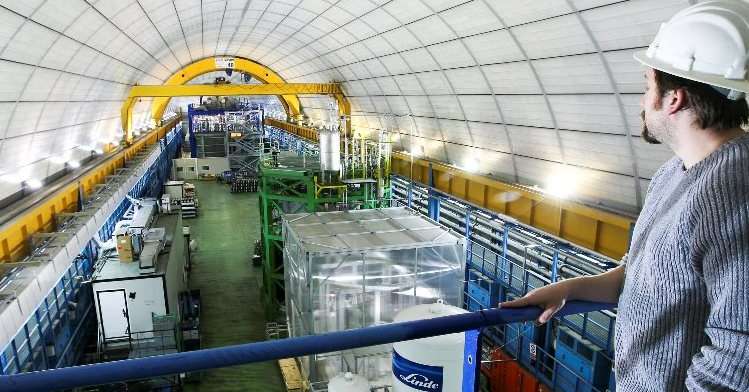Eagle. The United States will invest $1 billion in new state-of-the-art experiments at Gran Sasso laboratories. Two experiments – the first connected to thermal detectors at a millionth of a degree Celsius, the other to semiconductors, to discover the secrets of antimatter – will be set up in the laboratories, under a kilometer and a half of rock, in the heart. of Abruzzo, and it will bring hundreds of researchers from all over the world to the region. This announcement was made by the Director of Nuclear Physics Laboratory. Ezio Previtali, during the centenary celebrations of the National Research Council. “The US investment,” Previtali said, “could mark an era for L’Aquila and the entire region.”
Why Gran Sasso?
The US administration selected the Gran Sasso labs from eight possible options, three of which are in the US. “America”, Previtali explained, “we have decided that two of the three main future experiments in neutrino research will be developed under Gran Sasso. Globally, the experiments have investments in the order of a billion dollars. Two of them will come to us.” Another important milestone for the labs, but also a development opportunity for the entire Abruzzo, it will shine a global spotlight on antimatter research. “About a billion dollars of investment will be involved in neutrino physics for the next ten years”, Previtali underlined, “This is something that presents us with a difficult situation, because they are all experiments that are at the frontier of technology. The technologies that we are developing for that type of project do not really exist. The studies that are centered in L’Aquila And research opens up an enormous opportunity for the future.”
Current experiments
So far, 19 experiments have been developed in the laboratories, which concern various fields of application: Borexino is a large liquid scintillator detector whose primary purpose is to study the properties of low-energy solar neutrinos. The exceptional levels of radioactivity obtained by Borexino over the years have made it possible not only to achieve important research objectives, but also to produce many valuable results in the field of geophysics and the study of so-called rare processes. Forbidden. The DAMA-Libra experiment has been observing the expected annual modulation signal for dark matter particles for over a decade, although it is not reflected in most currently operating experiments. Cure, short for Cryogenic Underground Laboratory for Rare Events, has as its main objective the search for double beta decay without neutrino emission and the search for dark matter and the study of rare decays. Ginger represents a triangular array of highly sensitive gyroscopes whose primary purpose is the measurement of the lens-thrin effect, which is predicted by general relativity for the gravitational field generated by a rotating mass. This effect manifests as a slight perturbation of the Earth’s revolution frequency. Finally, between 2010 and fall 2013, the Xenon 100 detector reached its best limits regarding sensitivity to the elastic interactions of dark matter particles.
©All rights reserved

“Gamer. Professional beer expert. Food specialist. Hardcore zombie geek. Web ninja. Troublemaker.”







More Stories
“His Administration Like the Gestapo”
“Xenophobic countries”. Biden’s gaffe: The anger of America’s allies
Painting and Flowers: Gee’s Secret Message to America